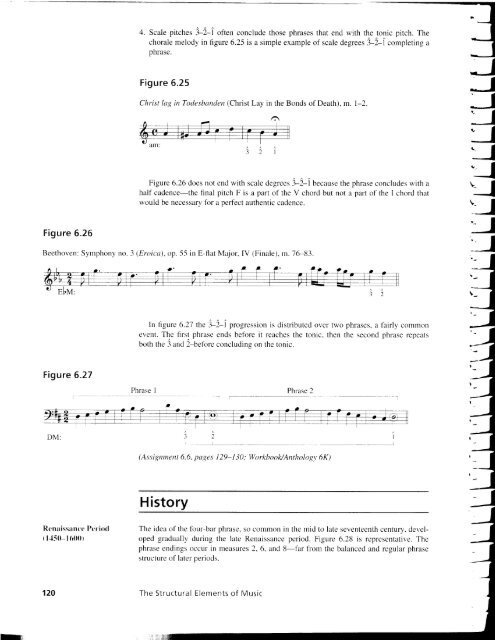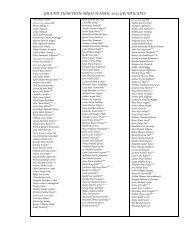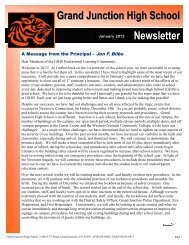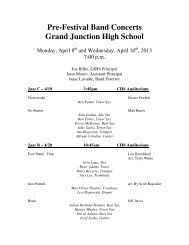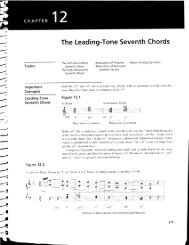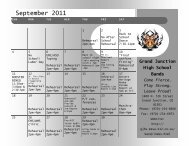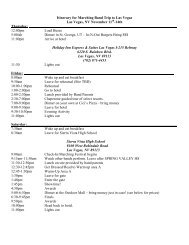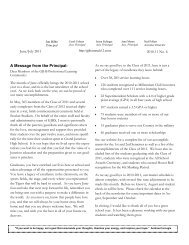You also want an ePaper? Increase the reach of your titles
YUMPU automatically turns print PDFs into web optimized ePapers that Google loves.
Figure 6.26<br />
4. Scale pitches T2-i often conclude those phrases that end with the tonic pitch. The<br />
chorale melody in figure 6.25 is a simple example of scale clegrees ll-i completing a<br />
phrase.<br />
Figure 6.25<br />
Christ lag in Todesbanden (Christ Lay in the Bonds of Death), m. l-2.<br />
A<br />
Figure 6.26 does not end with scale degrees 1-2-l because the phrase concludes with a<br />
half cadence-the final pitch F is a part of the V chord but not a part of the I chord that<br />
would be necessary for a perf-ect authentic cadence.<br />
Beethoven: Symphony no. 3 (Eroictr), op. 55 in E-flat Major, IV (Finale), m. 76-83.<br />
Figure 6"27<br />
Rcnaissance I)criod<br />
( l;15{)- I 6(X} )<br />
120<br />
In figure 6.21 the 3-)-i progression is distributed over two phrases. a fairly comfflon<br />
event. The first phrase ends befbre it reaches the tonic. then the secondphrase<br />
repeats<br />
both the 3 and 2-before concludins on the tonic.<br />
Phrase l Phrase 2<br />
t 2<br />
(Assignment 6.6, pages 129-130; WorkbooAAnthologt' 6K)<br />
H istory<br />
The idea of the tour-bar phrase, so cofflmon in the mid to late seventeenth century. developed<br />
gradually during the late Renaissance period. Figure 6.28 is representative. The<br />
phrase endings occur in measures 2, 6, and S-far from the balanced and regular phrase<br />
structure of later periods.<br />
The Structural Elements of Music<br />
I<br />
J J:_l<br />
:-l<br />
:-l<br />
"J<br />
'J<br />
:J ,J<br />
I I<br />
I<br />
I<br />
I<br />
,- l<br />
'_l<br />
'J<br />
)


